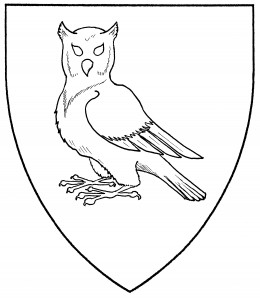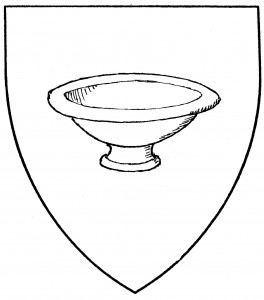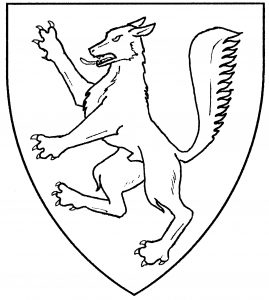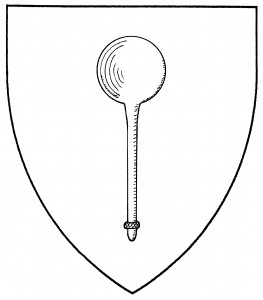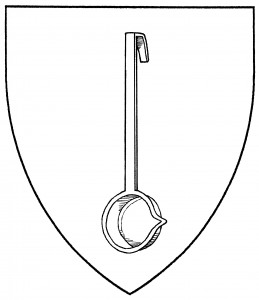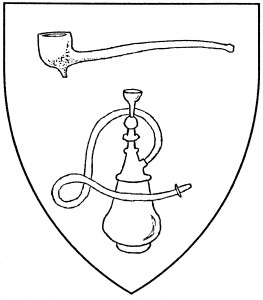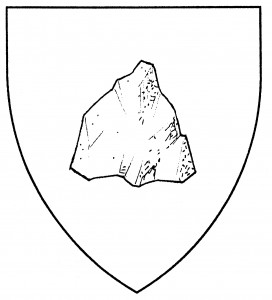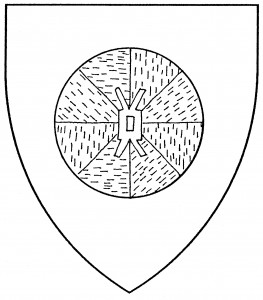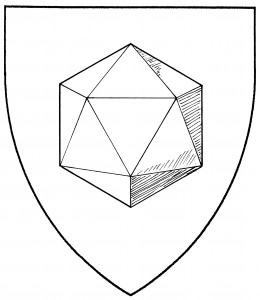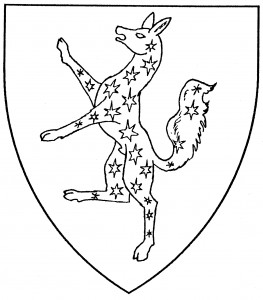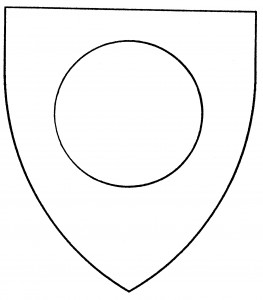
Roundel (Period)
A roundel is an ancient heraldic charge, consisting of a simple circular shape. Its use dates from the earliest heraldic records: bezants are found in the canting arms of Biset, c.1244 [Asp2 222].
Roundels of different tinctures have special names in blazon: A roundel Or may be termed a “bezant”; a roundel argent, a “plate”; gules, a “torteau”; vert, a “pomme”; sable, a “gunstone”, “pellet”, or “ogress”; azure, a “hurt”; purpure, a “golpe”. The use of these special names is discretionary. Note that only “bezant”, “plate”, “torteau” and “pellet” have been found in period blazons.
Also included in the roundel family is the “fountain“, a roundel barry wavy azure and argent. A Society-specific variant is the “t’ai-ch’i”, a roundel per fess embowed-counterembowed argent and sable, charged with two counterchanged roundels. As a non-European artistic motif, the t’ai-ch’i is not currently registerable; those already registered are deemed a step from period practice.
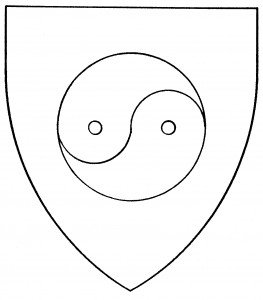
T’ai-ch’i (Disallowed)
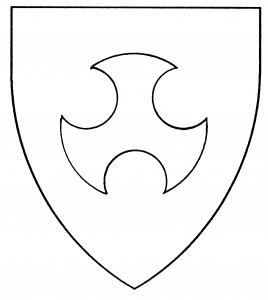
Roundel echancré (Disallowed)
Roundels with complex edges (e.g., the “roundel echancré”, with three semi-circular notches; the “roundel embattled”; &c) have been registered in the past; but their use has been disallowed, pending evidence of period use.
The roundel is considered a shape upon which arms may be borne; thus, like the lozenge and escutcheon, when used as a fieldless badge it must not itself be charged. See also astrolabe, bowl (dish), egg, labyrinth, moon, shield, sphere, yarn.
The Exchequer bears: Azure, a pale checky gules and argent between six bezants in pale three and three.
Alewijn van Zeebrouck bears: Sable, three roundels argent.
Nigel the Byzantine bears: Purpure bezanty and a bordure Or.
Duncan of Blackrock bears: Per fess and per bend sinister argent and vert, two pellets in bend.
Marius del Raut bears: Per chevron ermine and sable, three roundels counterchanged.
Ynir Cadwallen bears: Azure, a roundel echancré and in base a bar Or.
Morgan ap Llewellan Peregrine bears: Sable, a t’ai-ch’i, the line of division forming a hawk’s head erect, voided, orbed argent.
